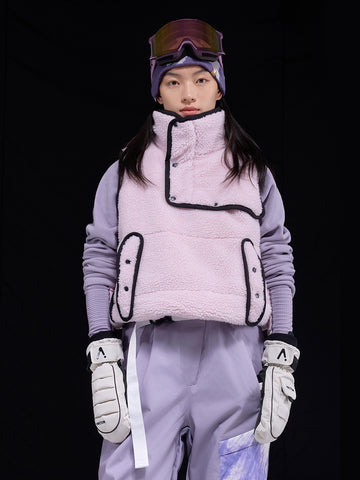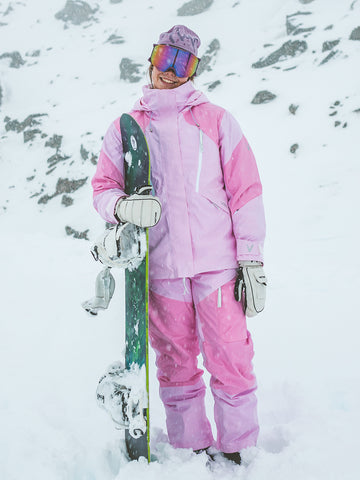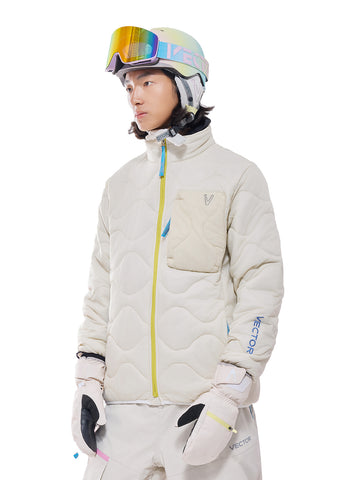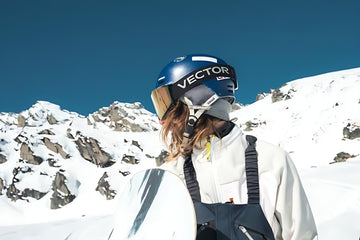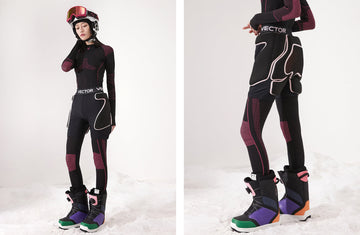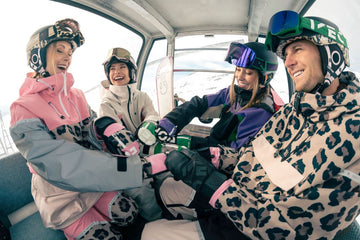By: Paul Mcmillan
Hitting the slopes in 2024 demands gear that keeps up with your evolving needs. One essential question is "What to wear snowboarding?" You want to make sure you're properly dressed for the slopes, including choosing the best snowboarding gloves. It's essential to know when does ski season start. Depending on the location and weather conditions, choosing the right snow goggles. Gone are the days of clunky lenses and foggy visions. This year, goggle tech is pushing boundaries, delivering unparalleled clarity, innovative features, and sleek designs. Dive into our curated list of the 7 best snow goggles of 2024, ensuring your ride is as epic as the scenery.
Anon M4 Toric

-
Expansive toric lens for panoramic views
-
ChromaPop™ technology for stunning clarity
-
MagnaTech® quick-change lens system
-
Sleek, low-profile design
-
Pricey compared to some competitors
-
The spherical lens option might be preferred by some
Vector Dark Knight Zeiss Lens Snow Goggles + Bonus Lens

-
Interchangeable lenses for optimal performance in any light
-
Quick-change lens system for easy adjustments
-
Triple-layer face foam for comfort and fog prevention
-
Anti-fog REVO coating for clear vision
-
Sleek, low-profile design with a wide field of view
-
Might not be as lightweight as some models
Smith I/O Mag XL

-
XL-sized toric lens for immersive views
-
Magnefusion™ quick-change lens system
-
Self-regulating ventilation system for fog-free vision
-
Triple-layer Dri-Wix face foam for comfort
-
Responsive strap for a secure fit
-
Large sizes might not suit all face shapes
-
Slightly higher price point
Oakley Fall Line XM

-
Reasonable price point
-
Prizm™ Lens Technology for enhanced clarity
-
F.O.V. expanders for a wider field of view
-
Quick-change lens system
-
Comfortable triple-layer fleece lining
-
Not as feature-packed as high-end models
-
Spherical lens might not be everyone’s preference
RVX MAG OTG – 30 Years

-
Swiftlock 2.0 magnetic lens change: Swap lenses fast and easily, even with gloves on.
-
100% anti-fog coating & Armored Venting: Stay fog-free all day long, no matter how hard you’re charging.
-
OTG-friendly design: See clearly with your prescription glasses, no bulky frame adjustments are needed.
-
Sleek frameless design: Look good and feel good on the slopes.
-
Helmet compatible: Seamless integration for a comfortable and secure ride.
-
Not the warmest option: If you run cold, consider thicker insulating options.
Giro Axis

-
Cylindrical lens for a wide peripheral view
-
VIVID lenses for enhanced clarity and contrast
-
Comfortable triple-layer fleece lining
-
Adjustable strap for a secure fit
-
Integrated tear-offs and Switch lens technology
-
Not as ideal for sunny conditions as some spherical lenses
-
Might not be the most stylish option
Glade Adapt 2

-
Automatic photochromic lens: adapts to changing light conditions, eliminating lens changes.
-
FlexFit frame: comfortable and secure fit for all face shapes.
-
Triple-density foam: plush and pressure-free, even after hours on the slopes.
-
Fog-free REVEAL™ lens: superior clarity in any weather.
-
Stylish and low-profile: looks great and integrates seamlessly with helmets.
-
Not the most affordable option: slightly pricier than some basic goggles.
-
Not ideal for low-light conditions: REVEAL™ lens performs best in moderate to bright light.
Summary
With so many fantastic options on the market, finding the perfect snow goggles for your needs has never been more exciting. Consider your budget, face shape, preferred lens technology, and riding style to narrow down your choices. No matter which goggles you choose, remember to prioritize safety and comfort as you carve your way down the mountain. Happy shredding!
FAQ:
Q: What are the best goggle lenses for snowy days?
A: The best goggle lenses for snowy days are typically ones with a high VLT (Visible Light Transmission) percentage, allowing more light to filter through, and enhancing visibility in low-light conditions. Goggle lenses with yellow rose or amber tints are often recommended for snowy and overcast days as they improve contrast and depth perception.
Q: What are the best goggles to prevent snow blindness?
A: To prevent snow blindness, it's essential to use goggles with lenses that offer 100% UV protection. Goggles with polarized or mirrored lenses are also effective in reducing glare and protecting against the intense reflection of sunlight on snow, helping to prevent snow blindness.
Q: What are the best goggles for snow?
A: When it comes to goggles for snow, consider sunglasses with wraparound frames and lenses that offer 100% UV protection. Polarized lenses can help reduce glare from snow and ice, while photochromic lenses are designed to adjust to changing light conditions, making them a versatile choice for different snow conditions. Additionally, wearing glasses with anti-fog coatings can help prevent moisture buildup while out in the snow.
References:
https://www.skimag.com/gear/helmets-goggles/best-ski-goggles/
https://www.switchbacktravel.com/best-ski-goggles
https://www.divein.com/snow/ski-goggles/



